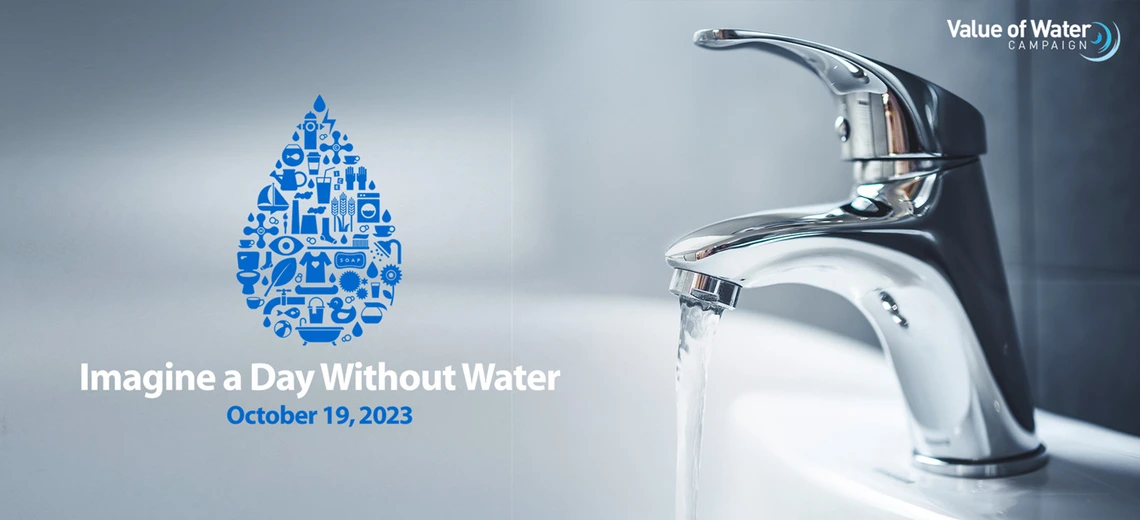Imagining a Day Without Water – Water Security in Arizona

On October 19, the US Water Alliance organized its 9th annual Imagine a Day Without Water campaign to raise awareness of issues of water security and to promote investment in our water systems. In recognition of this national call to action, the WRRC dug into some of the available water security data in Arizona.
For many throughout Arizona, imagining a day without water is not an academic exercise or thought experiment, it is a reality. For example, on the Navajo Nation, residents are 67 times more likely than other Americans to live without access to running water. This is the reality for many, not only on Tribal lands but also in rural and underserved communities throughout the state. These populations must haul water, sometimes from great distances (and at significant cost), for even basic needs such as drinking, cooking, and washing. Contemplating issues of water access and security, this analysis seeks to highlight the precarious characteristics of water access in many communities in Arizona that receive water delivered by public water systems.
Using publicly available data from the Arizona Department of Water Resources, the WRRC reviewed indicators of water security reported by Community Water Systems in reports required by Arizona law.
Community Water Systems (CWS) are regulated by the state and defined by statute as “an entity that sells or distributes water for human consumption through pipes or other constructed conveyances.” They must serve at least 15 service connections used by year-round residents or at least 25 year-round residents of the area served by the system. Arizona law distinguishes between small and large CWSs, with large systems being those that serve more than 1,850 people. The state requires CWSs to submit a three-part report every five years, detailing the system’s water supplies, the population served, conservation practices, and a plan for times of drought or water shortage.
Of the 742 active CWSs in the state, the WRRC analyzed information from a subset that submitted Water Supply and Drought Preparedness Plans within the last three years (n=463). CWSs with designations of adequate or assured water supply report their water supplies separately, so supply data for them are not compiled in the CWS database. Because the data are self-reported, gaps and discrepancies occur. For example, the number of people served by individual systems likely includes some non-residents, such as tourists, recreators, second homes, or others that may cause the number of people served to be inflated. In a recently published report on water affordability in northern Arizona, for example, the researchers noted that CWSs reported 400,000 persons served (including schools, second homes, and tourist attractions), while US Census data for the same area reports a population of 320,000. In fact, the dataset we were able to assemble does not allow us to determine how many people are represented by the reporting CWSs. Because of the way data are reported, population served and/or number of service connections were not recorded in the dataset for many CWS.
To get an idea of the security of system supplies, we reviewed information reported by CWSs in their drought preparedness plans. In these reports, CWSs are required to include information about their emergency backup supply. The CWS report records categories of drought (and outage) strategies, and reporting CWSs may indicate their plans to use one or more specific categories.
Categories include the existence of interconnections—whether the systems are connected to a neighboring system. Of the systems analyzed, 31% (144) report being interconnected to another system from which they can purchase water to serve their customers. Approximately 162 CWSs reported having a backup well to use in times of drought or shortage. Seventy-eight systems rely on only a single well for their supply. Of these 78 systems, only 13 have an interconnect with another system.
Approximately 230 CWSs intend for their customers to haul water and 110 of these noted actual or potential hauled water sources.
An ‘Other’ category is available for reporting strategies not captured in one or more of the specified categories. Approximately 40 CWS reported other arrangements in some detail, including water storage facilities that provide a buffer against relatively short-term outages.
Thirty-seven systems reported having no emergency backup water source. Many CWSs reported having no backup supply in addition to listing one or more strategies, for example, providing a two-day supply of bottled water. This likely indicates that they have no backup in case of long-term outages. In addition, about 25 CWSs listed only providing bottled water, also indicating a lack of long-term backup. Providing short-term supplies of bottled water was included in 195 CWS reports.
Of the systems that report groundwater as their sole source of water (348), 61 systems report that they will drill a new well for their emergency backup supply. As well drilling cannot provide water for short-term outages, this strategy likely indicates the intention, and possibly the resources, to respond to long-term changes in water supply.
This analysis did not assess the risk of imminent water supply shortage. These systems’ supplies may be wholly sufficient to serve their populations even through times of severe drought. The customers of CWSs lacking backup supplies, however, may be at risk of experiencing a day or more without water due to operational issues. Systems with interconnections among their drought strategies are likely to be less vulnerable to short and long-term supply reductions and outages. Our analysis highlights the vulnerability of systems reliant on limited resources and poses the question: how will the water security of their customers be protected? Until we can answer this question, it does not take much to imagine a day without water.
Data Source: ADWR, Community Water System Reports query, 9/28/2023

